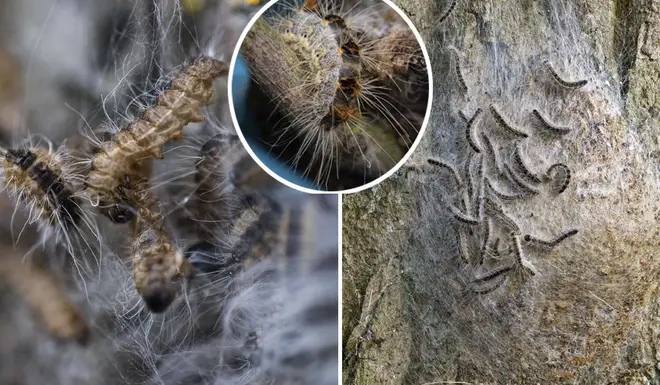On Air Now
Heart Breakfast with JK and Amanda Holden 6:30am - 10am
29 May 2020, 11:55 | Updated: 29 May 2020, 11:59

People have been encouraged to be careful and keep an eye out for the toxic caterpillars as we enter the 'greatest risk period'.
The UK public have been warned by experts to look out for an oak tree pest, also known as the Oak Processionary Moth.
The Forestry Commission have issued a warning to people in London and in the surrounding counties to not come into contact with the toxic caterpillars, and to report any sightings.
The Oak Processionary Moth was first spotted in London back in 2006, and has since spread.
READ MORE: Killer Asian hornets that can KILL with one sting set to invade the UK

In 2019, there were reported sightings of the caterpillars in Cambridgeshire, Hertfordshire, Essex and Lincolnshire.
The caterpillars and their nests contain hairs which can cause eye and throat irritations, as well as breathing difficulties in people and their pets.
As The Forestry Commission put work in place to stop the spread of the creatures, they are urging people to report any sightings.

They explain that nests are typically dome or teardrop-shaped, and average the size of a tennis ball.
The toxic caterpillars are white when fresh, and then turn discoloured and brown.
They have black heads and their bodies are covered in long white hairs.

The Forestry Commission explain that between May to July we are at the greatest rusk, as this is when they emerge to feed before pupating into adult moths.
People have been warned not to touch any of the caterpillars or their nests at any time.
Craig Harrison, the Forestry Commission’s South-East England Director, said: "Green spaces with trees are proving particularly valuable for visitors of woodlands, who are exercising whilst practicing social distancing this spring.
"Controlling OPM will help protect oak tree health and ensure continued enjoyment of parks and woodland by reducing the impact of OPM caterpillars to human health."
For more information, or to report a sighting, click here.